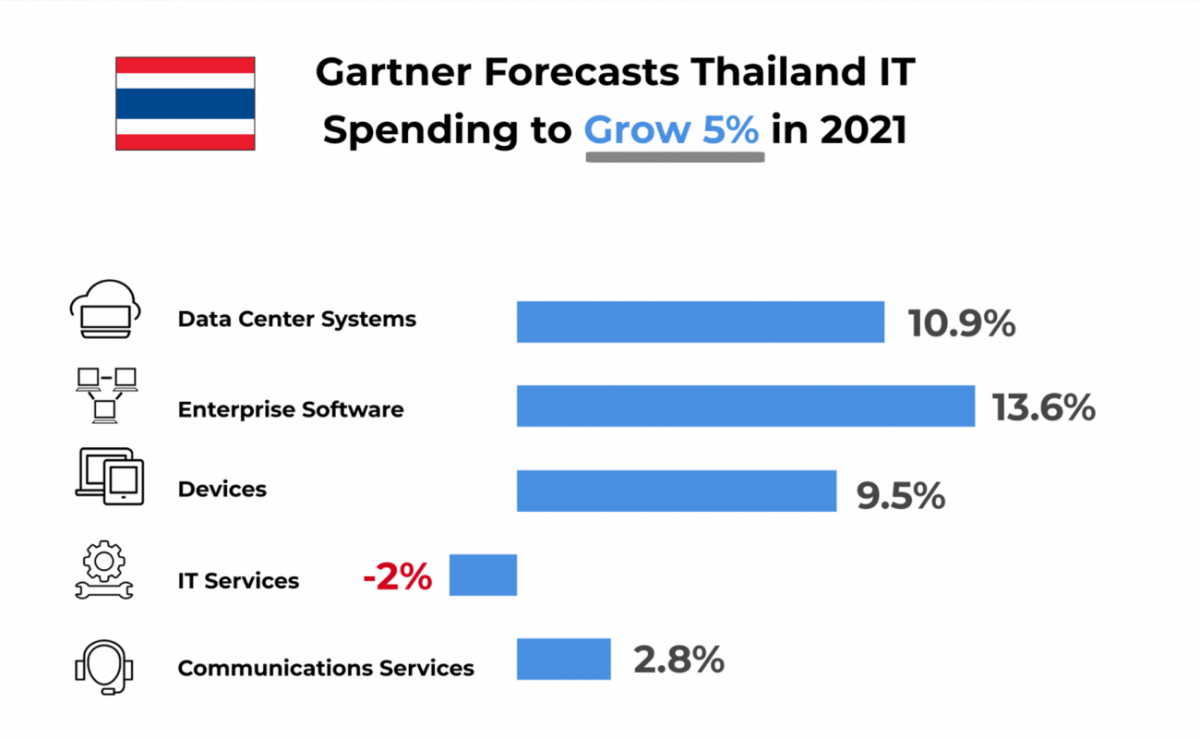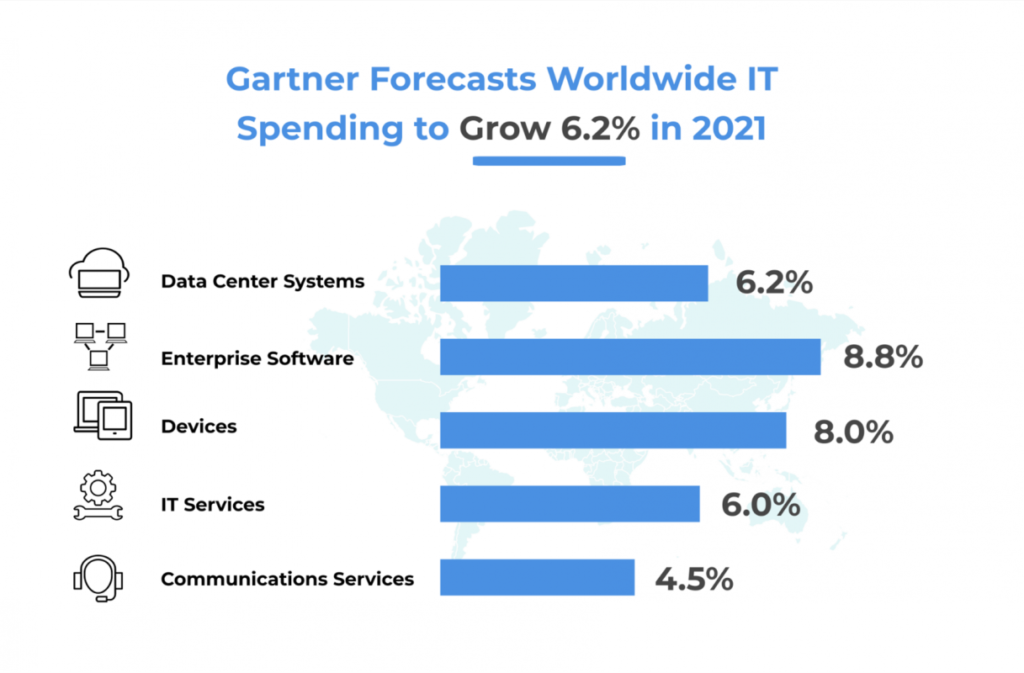Accelerated Digital Transformation Abated COVID-19’s Negative Effect on IT Spending
Worldwide IT spending is projected to total $3.9 trillion in 2021, an increase of 6.2% from 2020, according to the latest forecast by Gartner, Inc. Worldwide IT spending declined 3.2% in 2020 as CIOs prioritized spending on technology and services that were deemed “mission-critical” during the initial stages of the pandemic.
The unprecedented speed of digital transformation in 2020 to satisfy remote working, education and new social norms presented lockdowns and social distancing measures as double-edged swords – one which has abated the pandemic’s negative effect on IT spending going into the New Year.
“There are a combination of factors pushing the devices market higher,” said Mr. Lovelock. “As countries continue remote education through this year, there will be a demand for tablets and laptops for students. Likewise, enterprises are industrializing remote work for employees as quarantine measures keep employees at home and budget stabilization allows CIOs to reinvest in assets that were sweated in 2020.”
Through 2024, businesses will be forced to accelerate digital business transformation plans by at least five years to survive in a post-COVID-19 world that involves permanently higher adoption of remote work and digital touchpoints. Gartner forecasts global IT spending related to remote work will total $332.9 billion in 2021, an increase of 4.9% from 2020.
“Digital business represents the dominant technology trend in late 2020 and early 2021 with areas such as cloud computing, core business applications, security and customer experience at the forefront. Optimization initiatives, such as hyperautomation, will continue and the focus of these projects will remain on returning cash and eliminating work from processes, not just tasks,” said Mr. Lovelock.
Despite the availability of COVID-19 vaccines, the virus will continue to require government health interventions throughout 2021. Non-COVID-19 geopolitical factors such as Brexit and the U.S.-China tension will also inhibit recovery for some regions.
Overall, returning global recovery back to 2019 spending rates will not occur until 2022, although many countries may recover earlier. People-gathering industries, such as restaurants, travel and entertainment, will hover at the bottom long-term.
“COVID-19 has shifted many industries’ techquilibrium,” said Mr. Lovelock. “Greater levels of digitalization of internal processes, supply chain, customer and partner interactions, and service delivery is coming in 2021, enabling IT to transition from supporting the business to being the business. The biggest change this year will be how IT is financed, not necessarily how much IT is financed.”
More detailed analysis on the outlook for global IT spending is available in the Gartner webinar “IT Spending Forecast, 4Q20 Update: Recovery in 2021 but Recovered in 2022.” Learn more about emerging trends, expected challenges and next steps for CIOs and IT leaders in the Gartner ebook Top Priorities for IT: Leadership Vision for 2021.
Gartner’s IT spending forecast methodology relies heavily on rigorous analysis of sales by thousands of vendors across the entire range of IT products and services. Gartner uses primary research techniques, complemented by secondary research sources, to build a comprehensive database of market size data on which to base its forecast.
The Gartner quarterly IT spending forecast delivers a unique perspective on IT spending across the hardware, software, IT services and telecommunications segments. These reports help Gartner clients understand market opportunities and challenges. The most recent IT spending forecast research is available to Gartner clients in “Gartner Market Databook, 4Q20 Update.” This quarterly IT spending forecast page includes links to the latest IT spending reports, webinars, blog posts and press releases.
“CIOs have a balancing act to perform in 2021 — saving cash and expanding IT,” said John-David Lovelock, distinguished research vice president at Gartner. “With the economy returning to a level of certainty, companies are investing in IT in a manner consistent with their expectations for growth, not their current revenue levels. Digital business, led by projects with a short Time to Value, will get more money and board level attention going into 2021.”
All IT spending segments are forecast to return to growth in 2021 (see Table 1). Enterprise software is expected to have the strongest rebound (8.8%) as remote work environments are expanded and improved. The devices segment will see the second highest growth in 2021 (8%) and is projected to reach $705.4 billion in IT spending.
Source: PC and Associates Consulting

